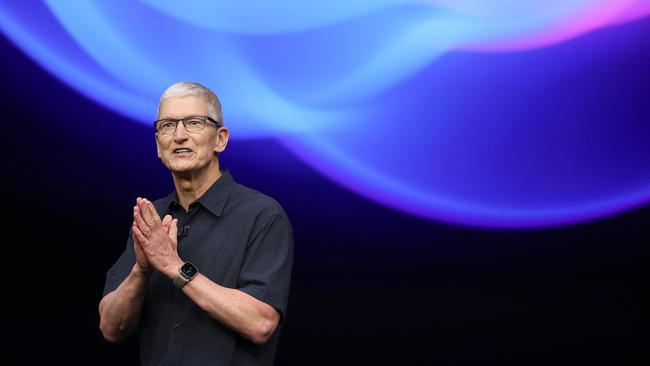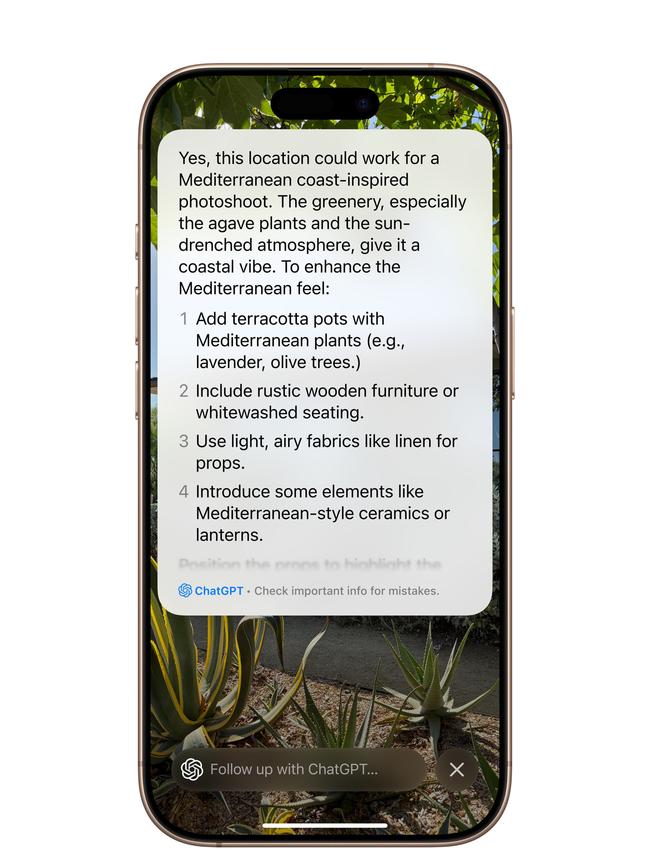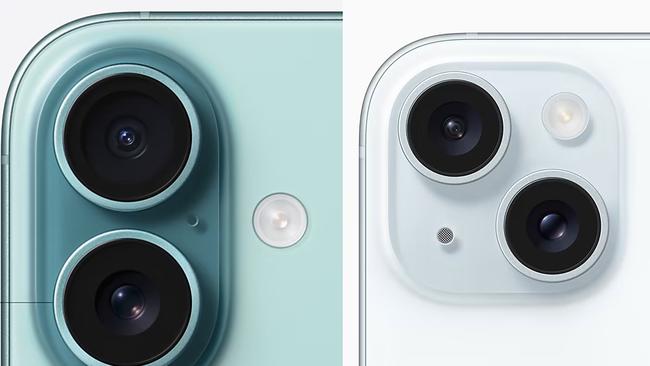How the iPhone 16 and iPhone 16 Pro compare with last year’s iPhone 15
The new line-up features better cameras, bigger screens and a new button. But the generative-AI Apple Intelligence will show off the devices’ biggest advances.
The iPhone 16 and 16 Pro are Apple’s first AI phones. But when they arrive on Sept. 20, the Apple Intelligence software they’re built to run won’t be ready. So while we wait for that ambitious suite of generative-AI tools, let’s look at what they will have on arrival. And how they compare with the previous Apple crops.
During a pretaped presentation aired Monday at its Cupertino, Calif., headquarters, Apple unveiled the four new iPhone models: — iPhone 16, starting at $799 — iPhone 16 Plus, starting at $899 — iPhone 16 Pro, starting at $999 — iPhone 16 Pro Max, starting at $1,199 The devices mostly look like last year’s models and cost the same, but with new colours and faster processors. Apple said they have bigger batteries and longer battery life: The regular iPhone 16 can play video two hours longer than the regular iPhone 15, according to the company’s specs. The Pro models boast an even bigger jump of two-to-four hours.
The star feature, a new Camera Control button on all four models, lets users quickly access and control the camera. The button also launches a feature exclusive to the new iPhones: Visual Intelligence, which identifies and interprets things seen through the camera.

You will have to buy one of the iPhone 16 options — or already have last year’s iPhone 15 Pro or Pro Max — in order to get the yet-to-be-released AI features, including a smarter Siri and text-summarisation tools. Apple is counting on AI to rejuvenate sales for new iPhones, even if its year-old models and newer iPads and Macs also will get the generative-AI capabilities.
Apple Intelligence
The company previewed Apple Intelligence at its developer conference in June, including a revamped Siri that can speak more freely and use personal context to deliver better responses. New writing tools will summarise, rewrite and proofread text in Notes, Mail, Pages and other apps. And the iPhone will be able to record and transcribe calls.
On Monday, Apple showed off the Visual Intelligence feature for the new iPhone 16 line-up.
Click and hold the Camera Control button while pointing your phone at, say, a restaurant. The iPhone instantly pulls up the business’s hours, ratings and information to make a reservation. If you see an event poster on a wall, Visual Intelligence can add it to your calendar, with all the details. Pointing your phone at a cute puppy in the park can tell you what breed it is.


Apple says the Camera Control is also a “gateway to third party tools.” If you see a bike similar to what you want to buy, firing up Visual Intelligence would let you google it. Pointing the camera at your homework would launch ChatGPT to help you. Visual Intelligence won’t be available at launch, but will come “later this year,” says the company.
Apple Intelligence will be available next month in beta with U.S. English for newer iPhones, iPads and Macs. In December, it will expand to localised English in Australia, Canada, New Zealand, South Africa and the U.K., followed by Chinese, French, Japanese and Spanish next year.
Design differences
The most notable hardware differences in this year’s line-up are the Pro models’ screen sizes.
The 16 Pro has a 6.3-inch display, up from 6.1-inches, while the 16 Pro Max increases to 6.9 inches from 6.7 inches. That means they’re a tad larger and heavier, too, but not any thicker.
The iPhone 16 and 16 Plus ship with Apple’s new A18 processor, which is powerful enough to support Apple’s advanced AI features. The Pro models get an even faster processor, the A18 Pro.
The iPhone 16 and 16 Plus come in a bright blue ultramarine shade, teal, pink, white and black, while the Pro models come in black, white, natural and the gold-shaded “desert titanium.” New buttons Then there’s the “Camera Control” button. It is located flush against the right side, and is both mechanical and touch sensitive, meaning you can press down but it also senses your finger when you don’t press.

A click launches the camera, and a second click takes a picture. Clicking and holding starts a video recording. The Camera Control can distinguish between a full click and a lighter press. Sliding your finger along the button can enable zoom or let you navigate to other controls. On the Pros, you can slide to move between different lenses.
Speaking of buttons, the regular iPhone 16 and 16 Plus get the “action button” that made its debut in last year’s 15 Pro models. The programmable key replaces the mute switch on the top left. It can be used to start a voice memo, launch the camera or quickly perform other actions. (You can still use it to mute your phone.) Camera changes The iPhone cameras themselves have some changes. Last year’s iPhone 15 Pro Max had a 5X optical zoom, but the smaller 15 Pro only had 3X. This year, both iPhone 16 Pro and Pro Max have 5X zoom capabilities.

Apple also updated the lenses and sensors in the Pro models, including a new 48-megapixel Fusion camera that can capture images quicker. Its new 4K, 120 frames-per-second video recording allows for cinematic slow-motion. The new 48-megapixel ultrawide camera lets users take higher-resolution images when shooting wider-angle shots or close-up macro images.
The regular iPhone 16 and iPhone 16 Plus also get some camera changes, including a lens redesign. Rather than the cameras being placed diagonally on the back, they’re now stacked vertically.
The phones have a new 48-megapixel fusion camera with a 2X telephoto option, which Apple says gives users two cameras in one. A new ultrawide camera enables macro photography.

Pro for pros Along with the professional camera-recording features in the Pro models are professional audio capabilities. The iPhone 16 Pro and 16 Pro Max have four new studio-quality mics, and video can be recorded in spatial audio to make it seem more surround sound.
Audio Mix lets iPhone 16 Pro users adjust their sound after recording video to focus on the voice of the person on camera; make it sound like video was recorded inside a quiet, professional studio; or make the main vocal audio clear while bringing in ambient sound for a cinematic feel.
And the Voice Memos app now lets you record one track and then layer another track on top of it — if you want to record guitar, for instance, then sing over it.
Along with new iPhones, Apple unveiled a new Apple Watch Series 10, AirPods 4 and other product updates.
The Wall Street Journal




To join the conversation, please log in. Don't have an account? Register
Join the conversation, you are commenting as Logout